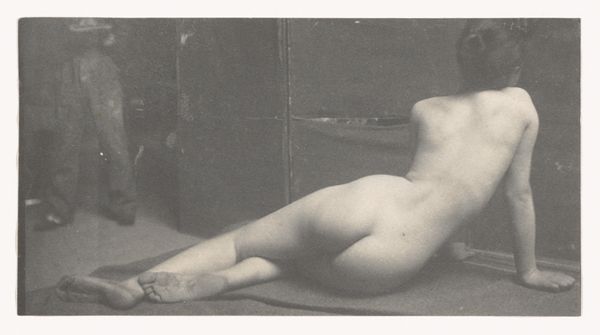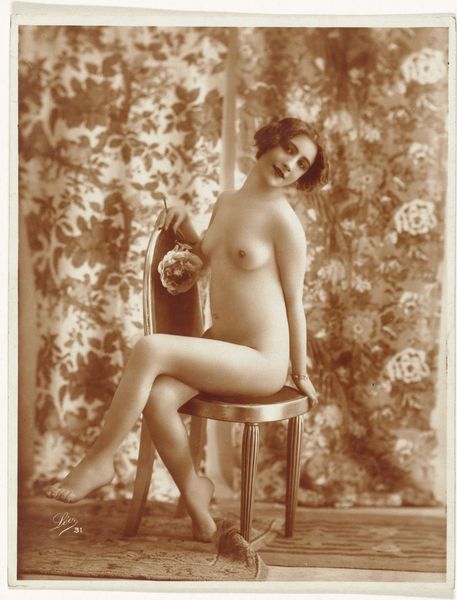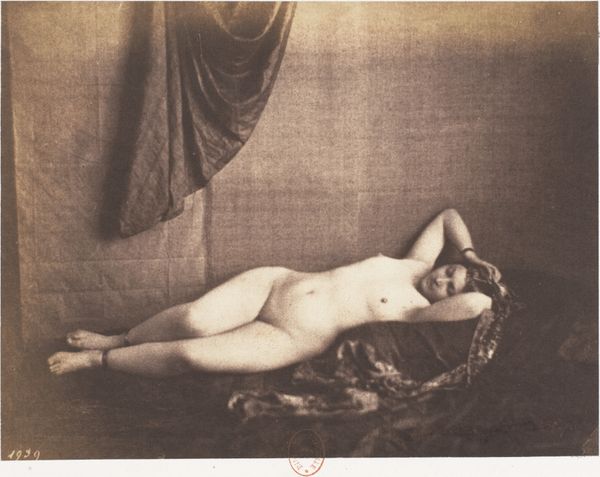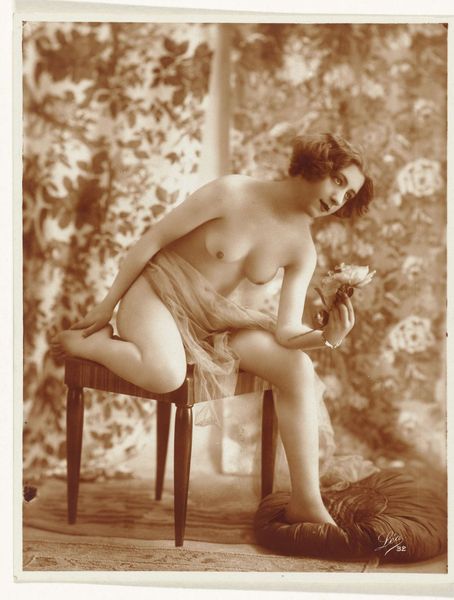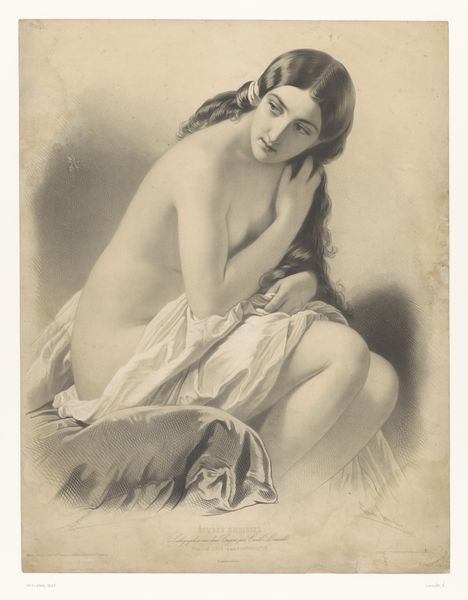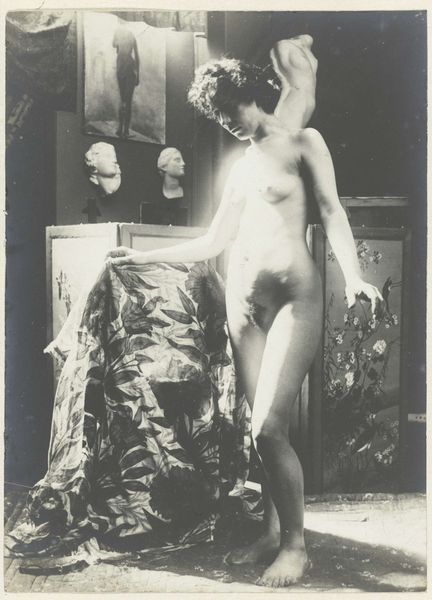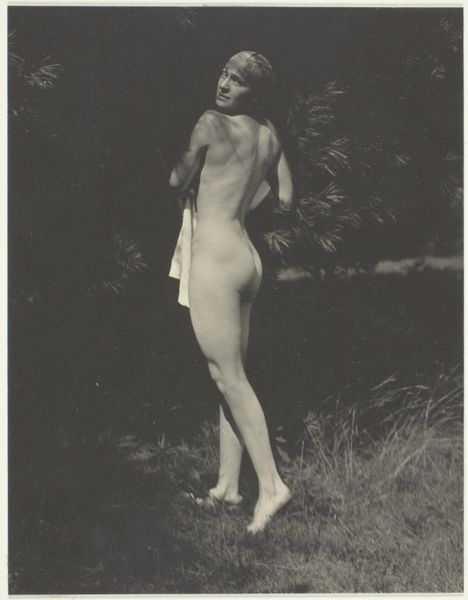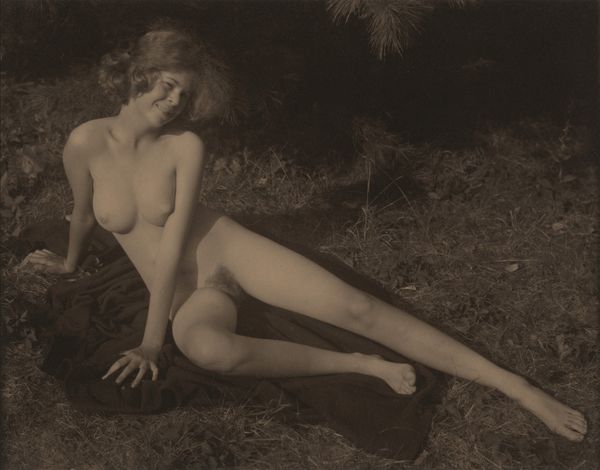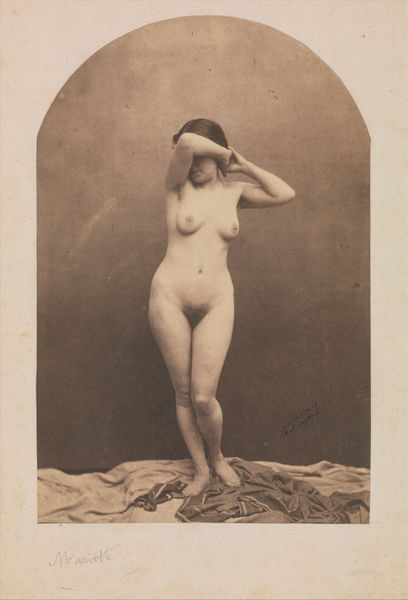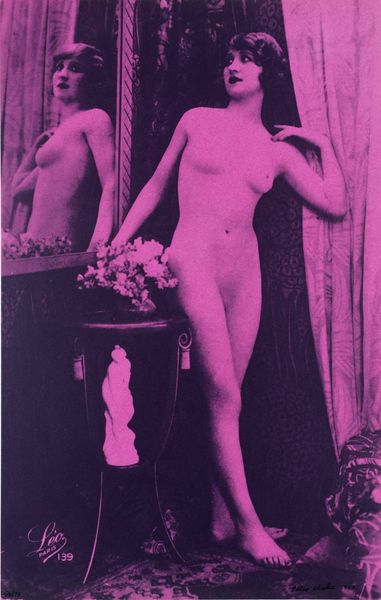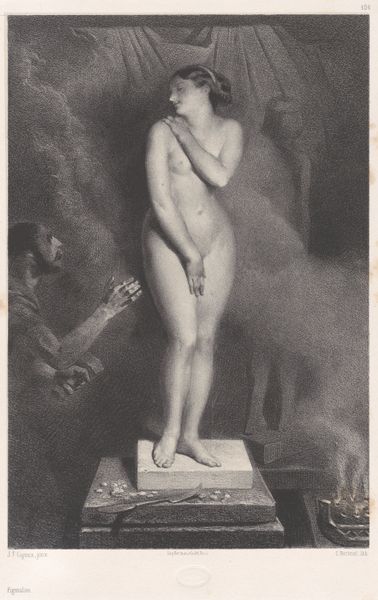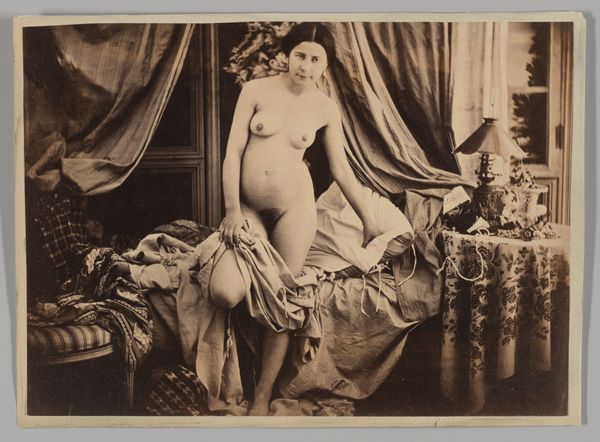
#
light pencil work
#
wedding photograph
#
purity
#
wedding photography
#
expressing emotion
#
light coloured
#
joyful generate happy emotion
#
strong emotion
#
photo layout
#
celebration photography
Dimensions: height 420 mm, width 220 mm
Copyright: Rijks Museum: Open Domain
Curator: Here we have Adolphe Joseph Huot’s work, “Jonge naakte vrouw als ‘La Cigale’," thought to have been created around 1874. Editor: What strikes me is this pervasive stillness. It's an intimate, almost hushed encounter. The figure seems lost in contemplation, doesn’t she? Curator: Indeed. Consider the material aspects, though. It appears to be a light pencil work. You see, this reproduction method allowed for a wider distribution of images, reaching middle-class consumers eager to decorate their homes with art. Editor: Fascinating. I love the narrative suggestion. The drapery hints at classical forms, yet there is something raw about her vulnerability, wouldn’t you say? Curator: That rawness, or so-called “purity,” became quite fashionable during the late 19th century as representations of idealized feminine virtues increased in the art market. Remember, we also have the commodification of the female body operating within this aesthetic landscape. Editor: A good point. Even the stylized foliage whispers secrets—a pastoral scene crafted to evoke sentiment. Curator: The title “La Cigale” also offers key insight into its socio-economic implications, since, in French folklore, the cicada famously spends its summer singing before finding itself destitute once winter arrives. Editor: And, in this portrait, Huot perfectly renders her expression conveying that the coming winter looms near, both fearful and maybe hopeful? I can see now how it fits within a didactic narrative aimed to provoke thoughts of how people should behave to fit inside that society... Thank you for unveiling its background more plainly to me. Curator: Precisely. Through examining these works and their historical making, we shed light on the networks of exchange and value judgments surrounding art during that era. Editor: What seemed like a sentimental image has become now a thoughtful commentary of life conditions from 1874.
Comments
No comments
Be the first to comment and join the conversation on the ultimate creative platform.

